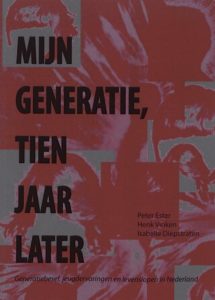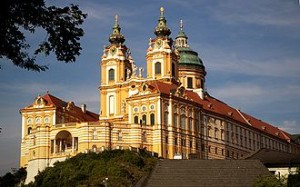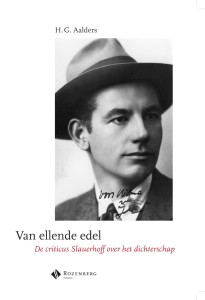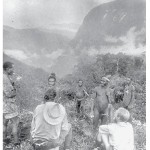Where Global Contradictions Are Sharpest ~ Research Stories From The Kalahari ~ Contents
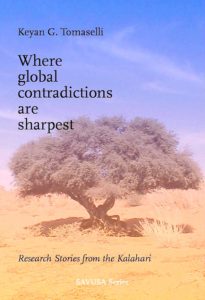 The ‘Bushmen’ or ‘San’ of the Kalahari could well be called an iconographic people. Partly as a result of this, over the years abundant social research has been carried out among the San. Keyan Tomaselli and his research team from the University of KwaZulu-Natal in South Africa form part of that tradition; however, in this book Tomaselli is also able to reflect critically, and not without a touch of irony, on the way the San have been represented over the years. Hardly ever has there been a researcher who so uncompromisingly and aptly illustrates the many ethical contradictions in doing fieldwork among the San, and at the same time manages to reconstruct and represent the actual fieldwork experience and the San people so vividly that you almost taste the dust of the Kalahari and smell the raucous world that is depicted.
The ‘Bushmen’ or ‘San’ of the Kalahari could well be called an iconographic people. Partly as a result of this, over the years abundant social research has been carried out among the San. Keyan Tomaselli and his research team from the University of KwaZulu-Natal in South Africa form part of that tradition; however, in this book Tomaselli is also able to reflect critically, and not without a touch of irony, on the way the San have been represented over the years. Hardly ever has there been a researcher who so uncompromisingly and aptly illustrates the many ethical contradictions in doing fieldwork among the San, and at the same time manages to reconstruct and represent the actual fieldwork experience and the San people so vividly that you almost taste the dust of the Kalahari and smell the raucous world that is depicted.
Note on the Author
Keyan G. Tomaselli is Professor in Culture, Communication and Media Studies, University of KwaZulu-Natal, Durban. He is a Fellow of the University and serves on the advisory board of !Kwa ttu – The San Cultural and Educational Centre. He is Old World book review editor of Visual Anthropology, and has published on visual anthropology in this and other publications such as Appropriating images: The semiotics of visual representation (Intervention Press, 1999). Other journals in which Tomaselli has published include: Visual Studies, Cultural Studies, Journal of Film and Video, Research in African Literatures, etc. He is published in translation in Italian, Spanish, French, Italian, Portuguese and Arabic, amongst others. Tomaselli is editor-in-chief of Critical Arts: A Journal of South-North Cultural and Media Studies.
Contents
Acknowledgements, Acronyms, A Note on Pronunciation
Starting Off – Different people, different communities – Specifically, what are we doing?
Chapter 1. Negotiating Research with First Peoples
Chapter 2. Reverse Cultural Studies: Field Methods, Power Relations and 4X4s …
Chapter 3. ‘Dit is die Here se Asem’: The Wind, its Messages, and Issues of Autoethnographic Methodology in the Kalahari
Chapter 4. ‘Op die Grond’: Writing in the San/d, Surviving Crime
Chapter 5. Psychospiritual Ecoscience: The Ju/’hoansi and Cultural Tourism
Chapter 6. Textualising the San ‘Past’: Dancing With Development
Chapter 7. Stories to Tell, Stories to Sell: Hidden transcripts, negotiating texts
References
© Keyan G. Tomaselli, 2005
Cover photograph: Frederik J Lange (Jnr). Taken between Witdraai and Welkom, Northern Cape, June 2005.
Coverdesign: Ingrid Bouws, Amsterdam
Editing: Saskia Stehouwer
Published by Rozenberg Publishers, Amsterdam, 2005, ISBN 90 5170 481 X
Mijn generatie, tien jaar later. Generatiebesef, jeugdervaringen en levenslopen in Nederland
Verder niets, er zijn alleen nog een paar dingen
die ik houd omdat geen mens er iets aan heeft
dat zijn mijn goede jeugdherinneringen
die neem je mee zolang je verder leeft
– Boudewijn de Groot
“Mijn generatie liet zich meer leiden door kerk en politiek en werd daardoor minder zelfstandig”, “In mijn generatie was er voor vrouwen geen pensioen en moest je ophouden met werken als je trouwde”, “In mijn generatie kon het niet op, er was werk genoeg en overal kreeg je subsidie voor”, “Mijn generatie heeft het moeilijk gehad om aan de slag te komen”, “Wat mijn generatie typeert is die enorme vrijheid die we hadden. Je mocht alles onderzoeken”. Dit zijn uitspraken van mensen uit verschillende generaties. Uitspraken die voor velen herkenbaar zijn. Ze suggereren dat personen uit een zelfde generatie gemeenschappelijke ervaringen hebben. Veelal gaat het om ervaringen uit de jeugdjaren die een blijvende indruk achterlaten en een stempel drukken op een generatie. Ervaringen die de lotgevallen van een generatie ook na de jeugdperiode tekenen.
Inhoudsopgave
Inleiding
1. Theorie over generaties
2. Jeugdjaren van generaties
3. Onderzoek naar generaties
4 .Onderwijs
5. Arbeid
6. Cultuur
7. Politiek
8. Toekomst
Epiloog
Literatuur
Mijn generatie, tien jaar later verscheen in 2008 bij Rozenberg Publishers. ISBN 978 90 361 0099 1
God wil het! Reizen in het spoor van de kruisvaarders
De historische importantie van de Kruistochten die tussen de 11e en de 15e eeuw plaats vonden in Europa en het Midden-Oosten wordt in het huidige tijdperk doorgaans door Westerse historici en politici onderschat.
Lejo Siepe en Robert Mulder volgden enkele jaren geleden het spoor van de eerste Kruistocht en ontdekten dat met name in de Arabische wereld de herinneringen aan de Kruistochten nog altijd levendig zijn. In de hoofden van veel moslims is deze historische gebeurtenis actueler dan ooit. De islamitische wereld voelt zich bedreigd door het Westen. Het Westen voelt zich bedreigd door de islamitische wereld. Een geschiedenis herhaalt zich. Heden ten dage worden in zowel de christelijke stromingen als in de islam de geloofsstellingen weer betrokken, gebaseerd op oude mythen, sagen en legendes. Hebben de Kruistochten in dit verband meer dan een symbolische betekenis?
In dit reisverslag langs de route van de eerste Kruistocht hebben Lejo Siepe en Robert Mulder geprobeerd antwoord te vinden op de vraag of er sprake is van een nieuw vijandsbeeld gebaseerd op oude vooroordelen. De auteurs spraken in Europa en in het Midden Oosten met vooraanstaande historici, schrijvers, filosofen en geestelijken (onder andere Amos Oz, Amin Maalouf, Sadik Al Azm, Benjamin Kedar, Halil Berktay) over de actuele invloed van de Kruistochten op onze moderne geschiedenis en de onverminderd voortdurende godsdienstige conflicten tussen moslims, joden en christenen.
Inhoudsopgave
Hoofdstuk Een – Reizen in het spoor der kruisvaarders – Inleiding
Hoofdstuk Twee – Duitsland: de vijanden van God
Hoofdstuk Drie – Hongarije: de koning der boeken
Hoofdstuk Vier – De Balkan: een eeuwig strijdtoneel
Hoofdstuk Vijf – Bulgarije
Hoofdstuk Zes – Constantinopel: in het kamp van de vijand
Hoofdstuk Zeven – Nicaea en Dorylaeum: Sterf dan honden!
Hoofdstuk Acht – Cappadocië: De vlakte des doods
Hoofdstuk Negen – Antiochië: het verraad van het harnasmasker
Hoofdstuk Tien – Antiochië: een teken van God
Hoofdstuk Elf – Syrie: twee grote leiders voor een geweldig volk
Hoofdstuk Twaalf – Libanon: het land van ruines
Hoofdstuk Dertien – Israel: het land van belofte
Hoofdstuk Veertien – Jeruzalem: God wil het!
Levende-Doden ~ Afrikaans-Surinaamse percepties, praktijken en rituelen rondom dood en rouw ~ Inhoud
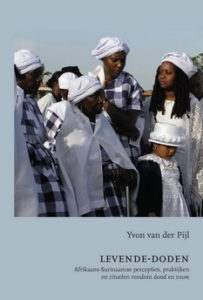 ‘De dood (of de zinspeling op de dood) maakt mensen kostbaar en aandoenlijk’ – Jorge Luis Borges in ‘De onsterfelijke’ (De Aleph, 1949)
‘De dood (of de zinspeling op de dood) maakt mensen kostbaar en aandoenlijk’ – Jorge Luis Borges in ‘De onsterfelijke’ (De Aleph, 1949)
Inhoud
Proloog: Anansi en Dood
1. Inleiding: we leven lekker hier
I – Identificaties & attitudes
2. Wortels & wording
3. Kruis & kalebas
4. De ander & de observator
II – Memento mori
5. Doodstijding & bekendmaking
6. Rituele organisatie & zorg
III – Dede oso
7. Achtergrond & actualiteit
8. Actoren & symbolen
9. Uitvoering & afsluiting
Van ellende edel. De criticus Slauerhoff over het dichterschap ~ Inhoudsopgave & Woord vooraf
1. Inleiding
2. Demonen en dode zielen: Ruslands letterkunde
3. Stéphane Mallarmé: mysterieuze hersenspinsels en het vrije vers
4. ‘In den beginne was het Woord’: een beginselverklaring
5. Jules Laforgue: ‘stoutmoedige acrobaat in tijd, ruimte en gebied van het ik’
6. Arthur Rimbaud: ‘Mijn doode kameraad, ontembre zwerver, burgerterger’
7. Tristan Corbière: ‘Mijn broederziel, wiens incarnatie ik misschien ben’
8. ‘Het geval Lautréamont’: de logica van een abnormaal individu
9. Rainer Maria Rilke: ‘het móeten zwerven’
10. ‘Gorters werk bezitten is al een groot geluk’. Slauerhoff en het vrije vers
11. Slauerhoff polemist
12. Recapitulatie
13. De identiteit van de dichter. Slauerhoffs vers-praktijk
14. ‘Van ellende edel’. Besluit
Bijlage I. Slauerhoffs publicaties beschouwend proza
Bijlage II. Een selectie uit Slauerhoffs poëticale gedichten
Bijlage III. Corbières besproken gedichten
Bijlage IV. Slauerhoffs stuk over Lautréamont
Bijlage V. Slauerhoffs besproken gedichten
Bibliografie
Extra: VARA ~ De wereld draait door: Van Dis en Meinderts over de nalatenschap van Slauerhoff
Rozenberg Publishers 2005 – ISBN 90 5170 516 6
Woord vooraf
Dit proefschrift was een project dat voor het grootste deel tot stand kwam in stilte en in de eenzame teruggetrokkenheid van studeerkamer, bibliotheek en archief. Toch had deze arbeid niet zonder anderen gerealiseerd kunnen worden. Een aantal mensen wil ik daarom op deze plaats bedanken voor hun bijdrage aan de totstandkoming van dit boek. Read more
The Kingdom Of The Netherlands In The Caribbean: 1954-2004. What Next?
– Preface (see below)
– Ernst M.H. Hirsch Ballin ~ Introduction
– Lammert de Jong ~ Repairing a not so united Kingdom. Can it be done?
– Denicio Brison ~ The Kingdom’s Charter (Het Statuut): Fifty years in the wilderness
– Francio Guadeloupe ~ The Politics of Autochthony and Economic Globalization: seamy sides of the same coin
– Denicio Brison – In reaction to Francio Guadeloupe
– Francio Guadeloupe ~ The need for a critical imagination. In reaction to comments by Denicio Brison
– Mito Croes ~ De ‘reinvention’ van het Koninkrijk
– Douwe Boersema ~ 50 jaar Statuut en verder
– Steven Hillebrink ~ Constitutional In-Betweenity: Reforming the Kingdom of the Netherlands in the Caribbean
– Dirk Kruijt & Wim Hoogbergen ~ Suriname 1954-2004. Kroniek van een illusie
– About the authors
Preface
This book contains a selection of treatises on the Kingdom of the Netherlands in the Caribbean, 1954-2004. The Netherlands Antilles and Aruba are part of the Kingdom of the Netherlands. The constitution of the Kingdom, Het Statuut (the Kingdom Charter), was formalized in 1954.
In anticipation of the 50th anniversary of the Charter for the Kingdom on 15th December 2004, a conference, workshops and a series of lectures were held in the Netherlands Antilles. On Sint Maarten, the Island government initiated a conference (22 October 2004), which also included representatives of neighboring islands (St. Kitts and Nevis, Anguilla, French St. Martin), to be followed, the next day, by workshops organized by the University of St. Martin. On Curaçao, the University of the Netherlands Antilles arranged a series of lectures for the general public in November and December 2005.
Most of the book is in English, part is in Dutch. This is a reflection of the language practice in the Kingdom of the Netherlands. On Sint Maarten the lingua franca is English. On Curaçao, a Dutch speaking national may lecture in Dutch, though a presentation in Papiamento would certainly add to the speaker’s standing. Notwithstanding, all lectures on Curaçao were in Dutch. The chapter on Suriname has been included in order to present a more complete picture of the Charter’s 50 years history.
The authors present a medley of interests in the Kingdom of the Netherlands: young scholars, seasoned academics, a former Aruban minister-plenipotentiary in the Netherlands and a former Dutch resident- representative in the Netherlands Antilles. The book’s Introduction is by Ernst M.H. Hirsch Ballin, a former minister of Kingdom Affairs and presently a member of the Council of State of the Kingdom. For many years he has maintained a deep-rooted and well documented interest in the Kingdom of the Netherlands in the Caribbean.
The book’s cover shows a picture of a statue of a black Caribbean woman wrapped in the colors of the Kingdom of the Netherlands.[i] We had some doubts about this choice of cover. Could it be labeled as frivolous, irreverent or missing the point? One of the authors convinced us that this statue reflects:
(…) that the Kingdom has been multi-ethnic for centuries; that people of all color have been part of Orange; and that this awareness is growing. This statue is gender sensitive by indicating the role women in colonial dress and head wrap have played in critically translating the Netherlands dominance so that Antilleans and Arubans while being victimized, did not see themselves as victims of history.
The statue symbolizes a new concept of the Kingdom of the Netherlands, and at the same time it explicates that since colonial times the borders of the Kingdom extend far beyond the North Sea. (Francio Guadeloupe)
With vigor and pleasure we have put this book together. Most of us knew each other in cyberspace only; some met for the first time in ‘hard copy’ on Curaçao and Sint Maarten. Very likely new bonds of scholarship have been fastened for the days to come. This book would not have seen the light without the 50-year Charter initiatives of the Island government of Sint Maarten (Sarah Wescot-Williams, Dennis Pantophlet, Dorothy Lake), the University of St. Martin (Josianna Fleming-Artsen, Maria van Enckevort) and the University of the Netherlands Antilles (Miguel Goede and Douwe Boersema). We and our readers owe them much appreciation. Only insiders know how hard it was to find the money to realize these initiatives. Auke van der Berg, Rozenberg Publishers, agreed to run the press again by stating: the future of the Kingdom is our niche.” So be it.
Lammert de Jong
Amsterdam, April 2005
NOOT
i. This statue was a complimentary present to friendly relations of a political party (C 93) on Curaçao that aimed to integrate the Netherlands Antilles as part of the Netherlands. Many years ago I had to honor to be invited on a Sunday morning on Curaçao to speak about various options of Kingdom relations and have since treasured this statue on one of the Caribbean bookshelves in my study. This party did not achieve this goal and the gist of this book does not deal with this option.
Rozenberg Publishers ~ ISBN 978 90 5170 195 1 – 2005
